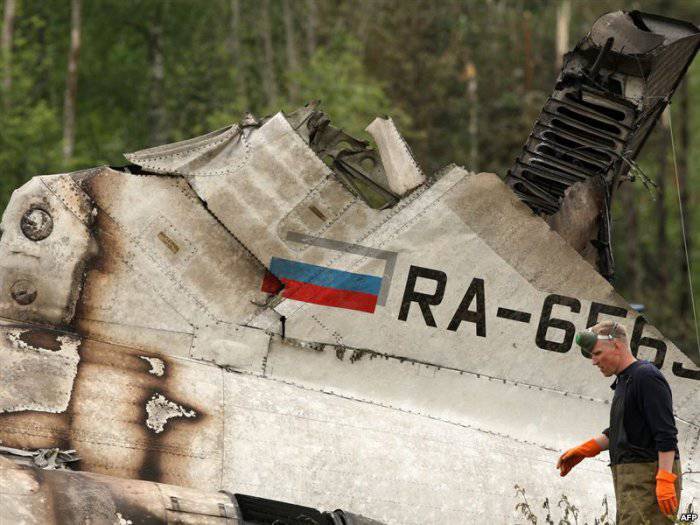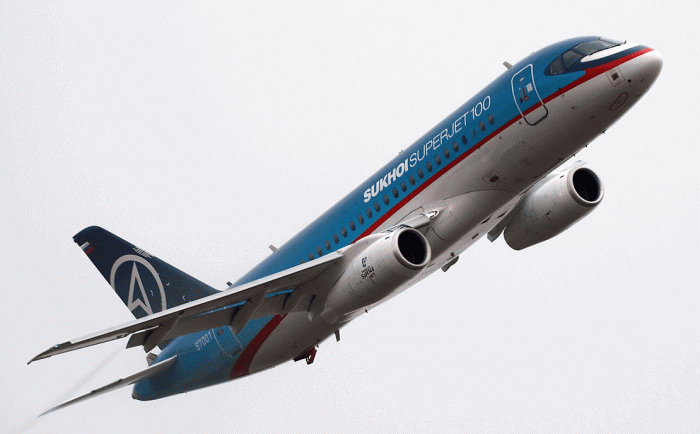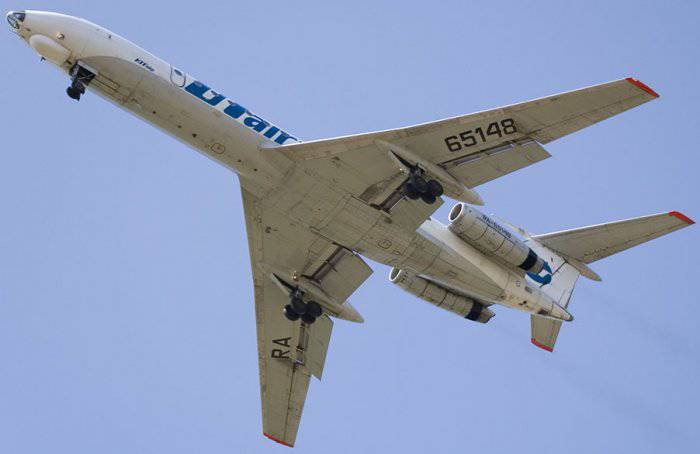Catastrophe in Petrozavodsk Tu-134 - a catastrophe not only for the aircraft, but for the entire aviation?
June 20, 2011 near Petrozavodsk at a distance of one kilometer from the runway of Besovets airport, a Tu-134 plane crashed. Onboard were 52 passengers and crew members, this disaster claimed the lives of 47 people, today five survivors remain in hospitals. This catastrophe caused a wide response in the media, given the statement by the Russian president on the order to decommission all Tu-134 aircraft. Most likely, this decision was influenced by many factors, but the following issues received the most widespread discussion among the masses: on the same day another demonstration flight of the new Suhoi Super Jet 100 airliner took place in Paris. Moreover, it passed with great success, giving confidence in the appearance in the Russian aviation new civilian aircraft to replace obsolete.
In this regard, it is difficult to argue that news air crashes are often referred to with the phrase “another plane crash”. Indeed, even though air transport is much safer and more reliable than, for example, automobile, even with the crash of airliners, domestically produced airplanes do suffer disasters, and it is not surprising that this creates distrust and even fear of flying on “Carcass”. This situation, of course, is influenced by the statements of the country's leadership and aircraft manufacturers, but it all depends on how any information is presented in the press. It is not a secret that, considering the state of the aviation industry in Russia, our media pay special attention to any accidents and “forget” about these events after a short period of time. Therefore, the majority of our citizens, even if they do not use air transport, know that “trouble” is in the aircraft industry, aircraft suffer accidents one after another and the new Super Jet 100 shines at an air show in France. Such statistics is by no means reproached for the new SSJ 100 aircraft, but rather as a complaint to the short-sightedness of statements and coverage of information, frankly, by non-professionals in this field.
As for the prescription of the decommissioning of "carcasses", many more will either condemn or support this decision, but hardly anyone will think about the expediency of this decision after this catastrophe. The technical condition of the aircraft did not cause any complaints from specialists, and the established cause of the crash is the human factor version, i.e. pilot error. It means that if Tu was taken out of service, for obvious and reasonable reasons, it was necessary to do this much earlier, because the prototypes of the aircraft were created in 1960's, and the last one was released in 1987. Either it becomes unclear why this decision was made on such an urgent basis. The success of the SSJ can indeed be an explanation of this fact - replacing the fleet of airliners can substantially fill with orders the factories of the domestic industry, which will give a big boost to Russian aviation. Those. It turns out such a decision: “shoot a hunted horse” so that the new stallion takes its place in the stalls. In fact, there is no cynicism in such a hypothetical decision, because no one really argues with the dilapidation of the aircraft fleet, and we don’t have another new domestic airliner, so the policy should not be accused of selectively lobbying business, since such a decision will benefit the whole country .
But back to the cause of the disaster. Crashed near Petrozavodsk, the Tu-134 was by no means the first aircraft crashed due to pilot error. Against this background, the accusations of catastrophic state of the aircraft seem a bit deceptive, because the planes flew forty and fifty years ago, and what has changed by now, the air? No, the attitude and legislation to the standards of aircraft maintenance and flights has changed. Even if we recall the reasons for the acclaimed air crashes, such reasons as the errors of dispatchers, poor-quality and diluted fuel with water, as well as incomplete pre-flight maintenance, come to mind. Thus, it turns out that airplanes fly steadily, despite their age, but if they are deprived of their respective operational measures, then accidents cannot be avoided. Here, the fate of SSJ 100 aircraft scares a little, because even a new and, what is not the same, modern aircraft is not insured against a catastrophe due to the banal sloppiness of airline employees, airports and other personnel. As for pilot's mistakes, these are problems caused not only by human qualities, but also problems in the Russian flight school - when there are no new airplanes to fly, then it is not surprising that there are no new airplanes to learn how to fly. Do not forget that modern aircraft is not only a lot of high-tech mechanisms and devices, but also the most sophisticated electronics. Even aircraft manufactured during the Soviet period underwent all sorts of upgrades and retrofits, and this was mainly related to electronic stuffing. Another thing is that for some reason, the simulators and training aircraft were reequipped last, or rather the fact that the aircraft were re-equipped by commercial airlines in order to fall under modern flight standards, while flight schools remain state educational institutions and, apparently, , do not have sufficient funding.
Summing up, it is worth noting that the catastrophe near Petrozavodsk could be one of the turning points in Russian aviation, given the decisions taken. Unfortunately, catastrophes and human sacrifices will always be used to cause a public outcry and, on this basis, to make, albeit correct, but belated decisions. It is sad to realize that even if tomorrow in domestic aviation everything starts to get better, then the impetus for changing the situation in the heads of many ordinary people will not be the success of SSJ 100, but a disaster with the death of people. Another thing is that it is possible to talk about intractable problems in Russian aviation for a long time, but while Russian planes are in operation, airlines are transporting passengers, design bureaus and aircraft factories produce and modernize new planes, and the state supports and finances this activity, the hope of a rebirth of Russian greatness civil aviation remains.



Information